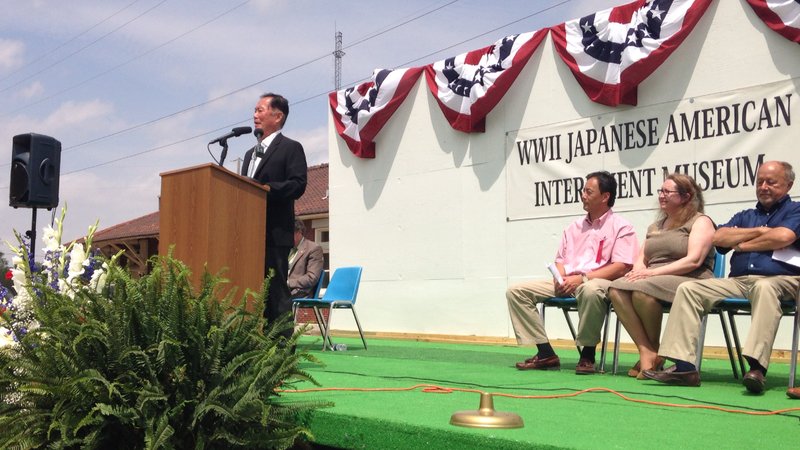McGEHEE — The memories of his time in the Japanese American Internment camp at Rohwer still stick with George Takei.
The 75-year-old actor and activist spent four years in the camp — one of two in the state of Arkansas — after guards arrived at his parents' southern California home and took his family to southeast Arkansas. After a certain amount of time, he said, things he saw at the camp became the norm.
"It was normal to stand in lines with other Japanese Americans, waiting to eat," he said. "It became normal to wait in long lines with my father to shower in a public shower."
Takei, who began his internment with his family when he was 5 years of age, came to McGehee on Tuesday afternoon for the official opening of the World War II Japanese American Internment Museum.
The museum houses several artifacts, documents and stories of the thousands of Japanese Americans who were forced from their homes by the United States government in the wake of the attack on Pearl Harbor on Dec. 7, 1941.
Around 110,000 Japanese Americans and Japanese immigrants on the west coast were interned at various camps from California to as far east as Arkansas — there was also an internment camp stationed in Jerome — from 1942-46 on the execution of Executive Order 9066 signed by President Franklin D. Roosevelt. President Ronald Reagan later signed the Civil Liberties Act of 1988 into law, apologizing to Japanese Americans for their unlawful imprisonment in the camps.
The event featured a ceremony in front of the museum with comments from Takei, McGehee Mayor Jack May, former Arkansas House Speaker Robert Moore Jr. and other dignitaries from the museum and around the state.
May, who grew up in the area, said he has boyhood memories of the camp, watching those interned there use the fields in the area near the camp for gardening.
While the number of actual internees has dwindled over the years, a small amount of those showed up for the ceremony with their families. One was Toshiko Doi, 73, who came to Rohwer with her parents as a baby and recalled stories from her parents after their release.
"I think the exhibit was very well done," Doi, who is visiting the site for the second time, said. "I'm going to try and encourage other people to come see it....When I went out to the internment site, I didn't know how I would feel. Because I left in 1944 so I was, like, four years old. And I had, like, sadness, to think we were living here as prisoners."
A second ceremony also took place at the Rohwer Relocation Center National Historic Landmark near the actual site of the internment camp, which houses a memorial grave to the Japanese Americans who fought for the country despite the prospect of internment for their families and themselves.
"This was an opportunity to validate those memories," Takei, who added that the internment shaped him as an activist, said.
Read more about this story in Wednesday's Arkansas Democrat-Gazette.
